Abstract
1. The responses of human cutaneous blood vessels to intradermal injection of bradykinin, histamine and 5-hydroxytryptamine (serotonin) are studied in order to evaluate the ability of these agents to mediate the vascular changes of sustained acute inflammation in the skin.
2. Bradykinin produces erythema, owing to a direct effect on blood vessels, and wealing. Dose—response studies indicate that bradykinin is more potent than serotonin or histamine in respect of wealing.
3. The response to serotonin differs qualitatively as well as quantitatively according to dose. High doses cause wealing and erythema with the characteristics of an axon reflex flare, but low doses produce erythema by a local effect without wealing.
4. Using the technique of arterial occlusion, the occurrence of tachyphylaxis in respect of wealing was demonstrated with histamine and serotonin, but not with bradykinin. This evidence suggests that of the three agents, only bradykinin can mediate increased vascular permeability in sustained acute inflammation.
5. The specificity of tachyphylaxis and the failure of anti-histamine to antagonize bradykinin wealing suggest that bradykinin and histamine act on separate blood vessel receptors.
6. Corticosteroids do not inhibit wealing due to a wide range of doses of bradykinin. The anti-inflammatory activity of corticosteroids may therefore be due to reduced formation of kinins.
Full text
PDF
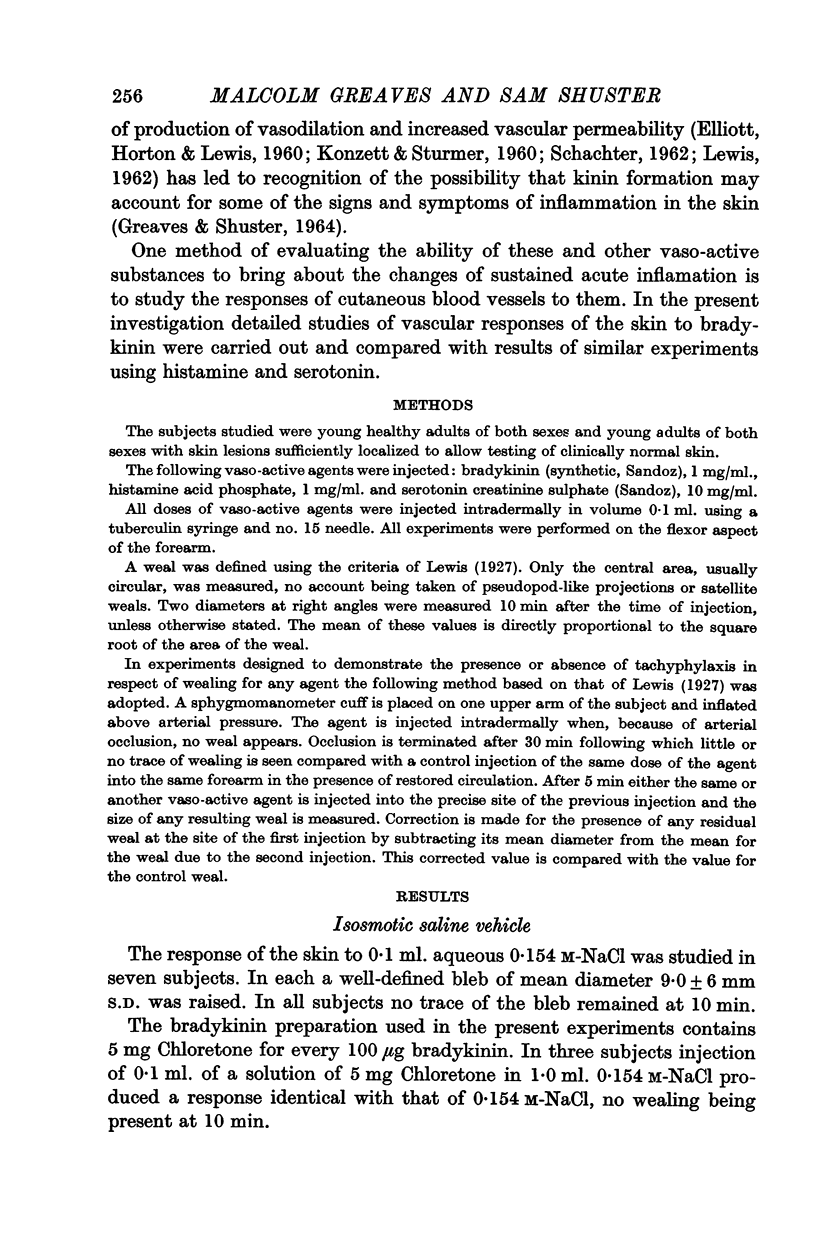

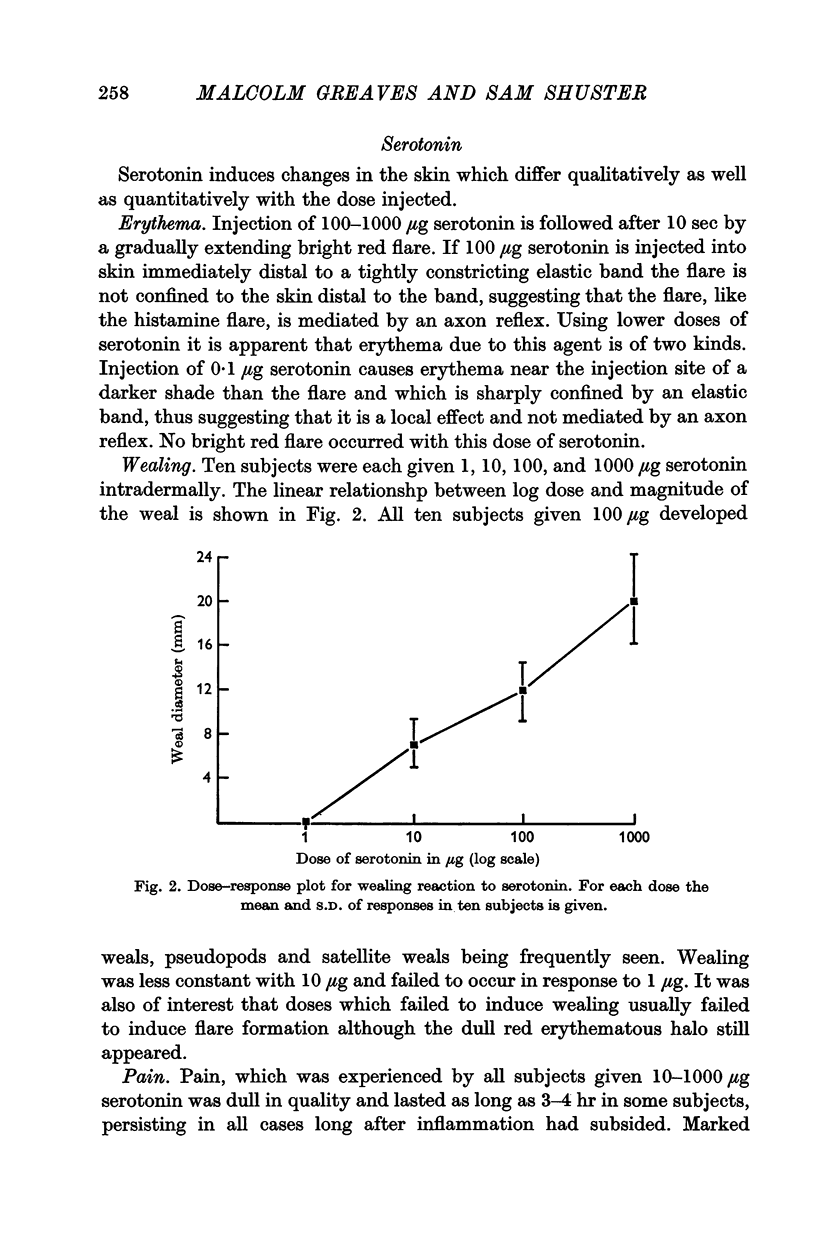


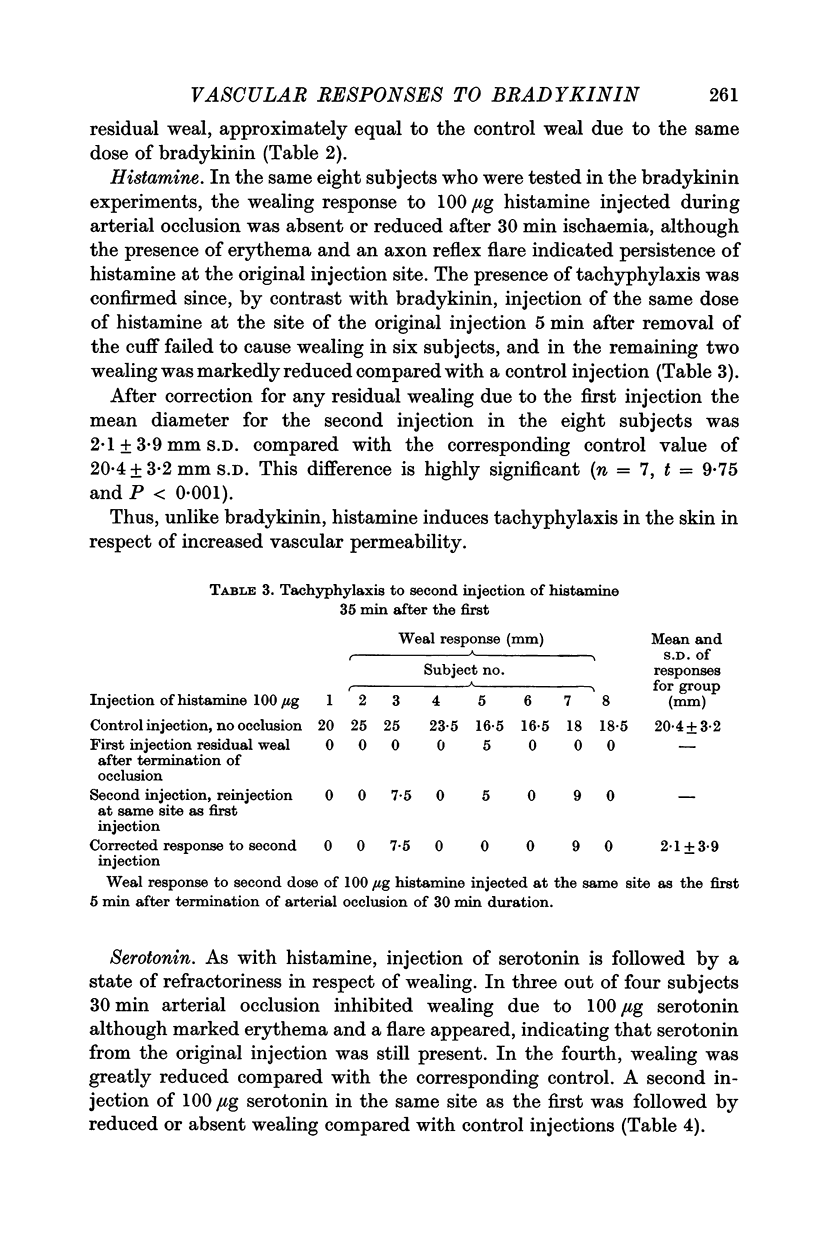
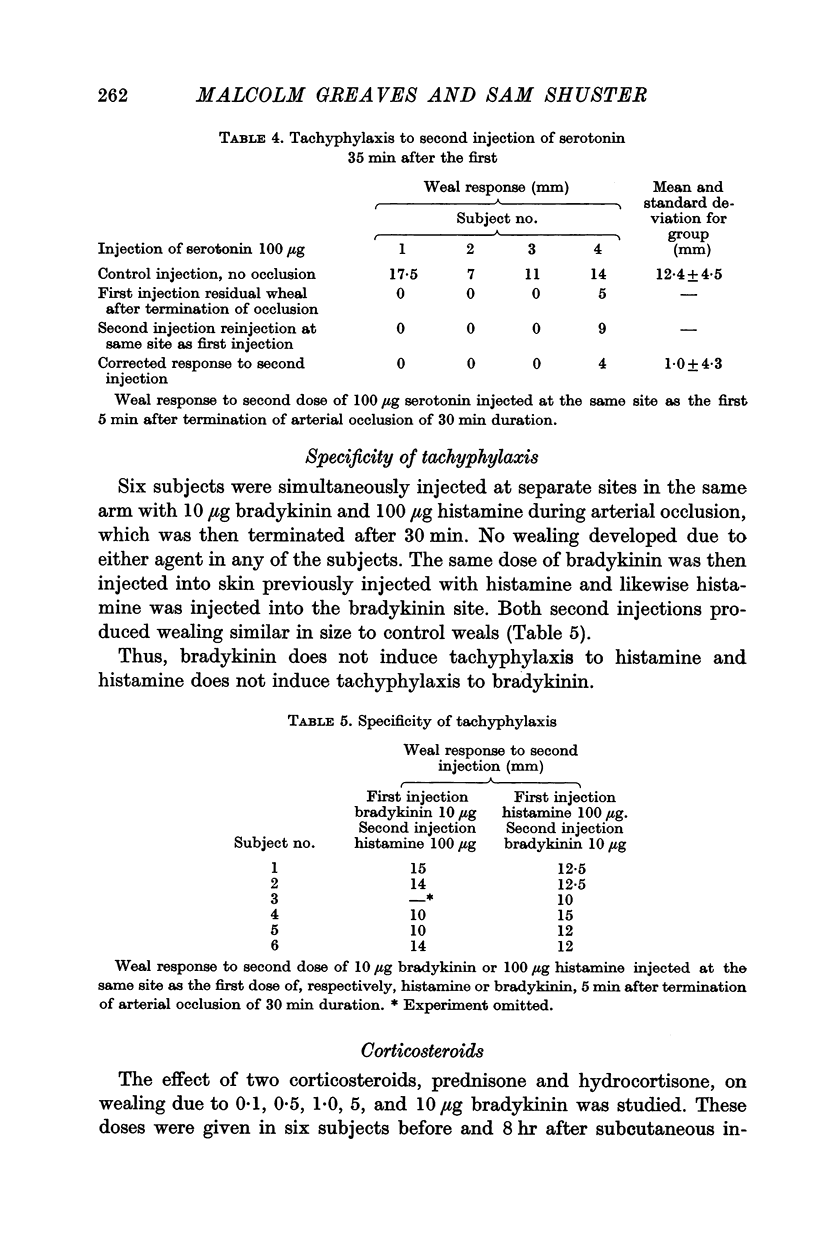
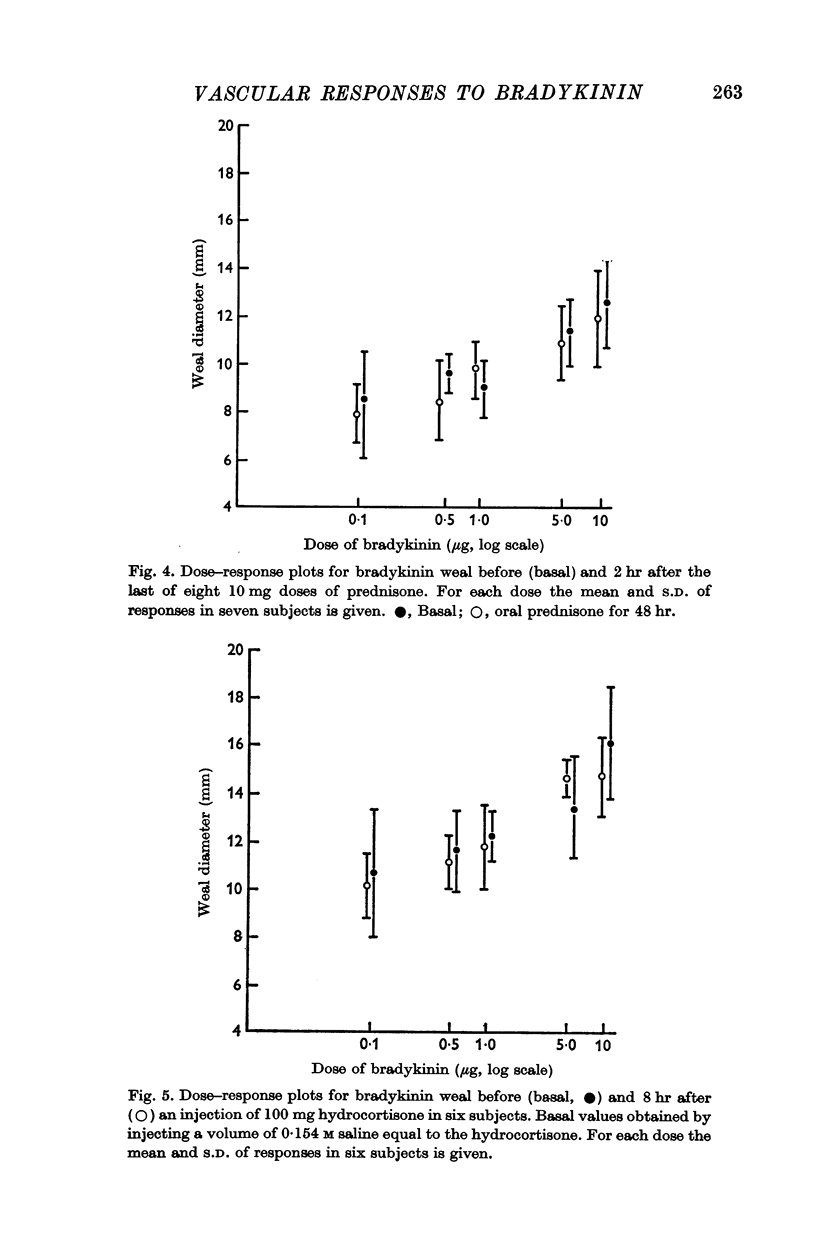
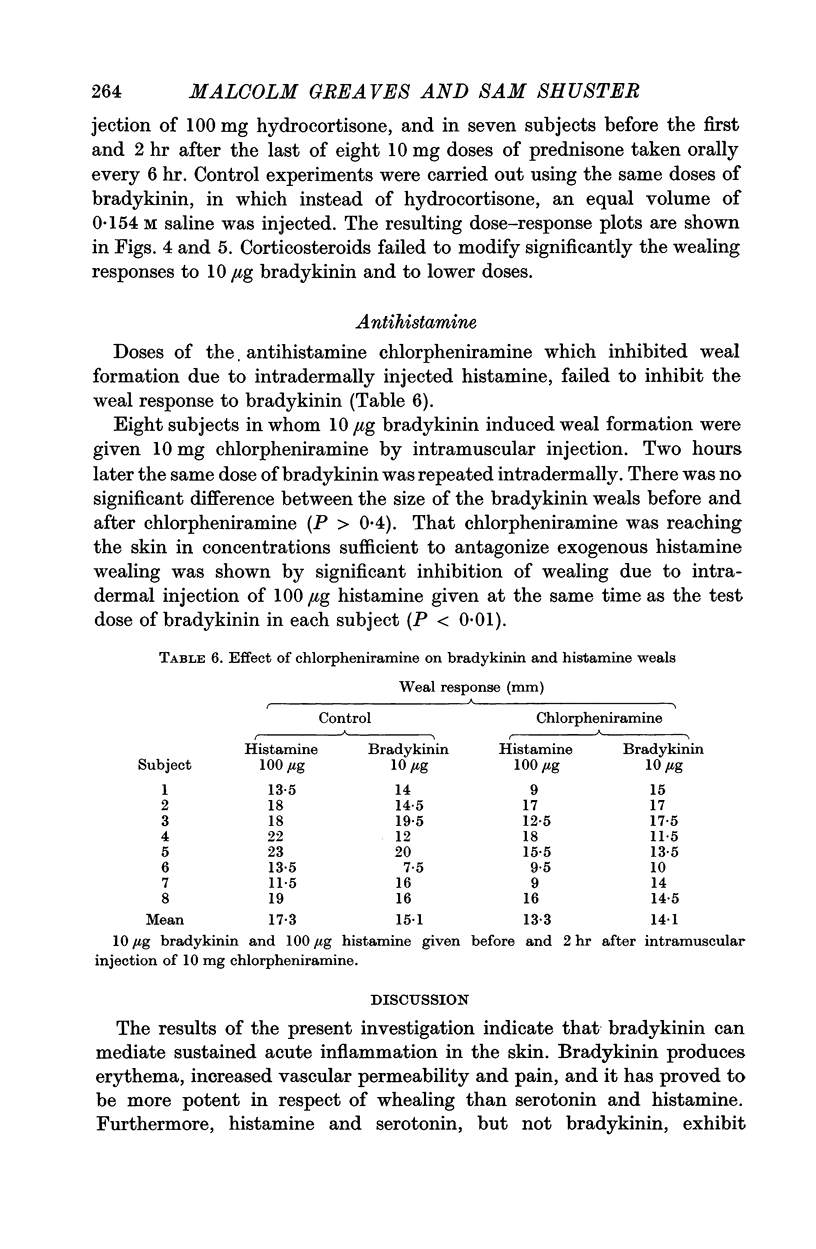
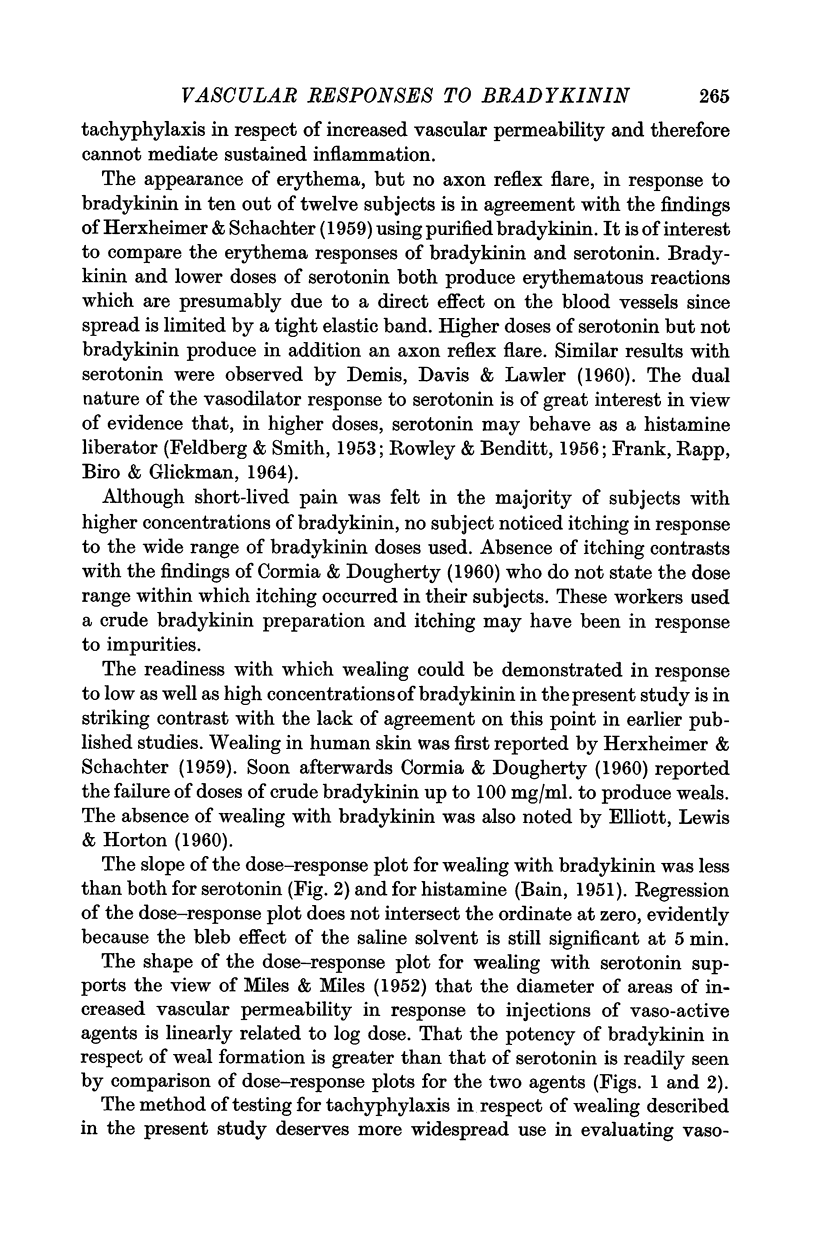

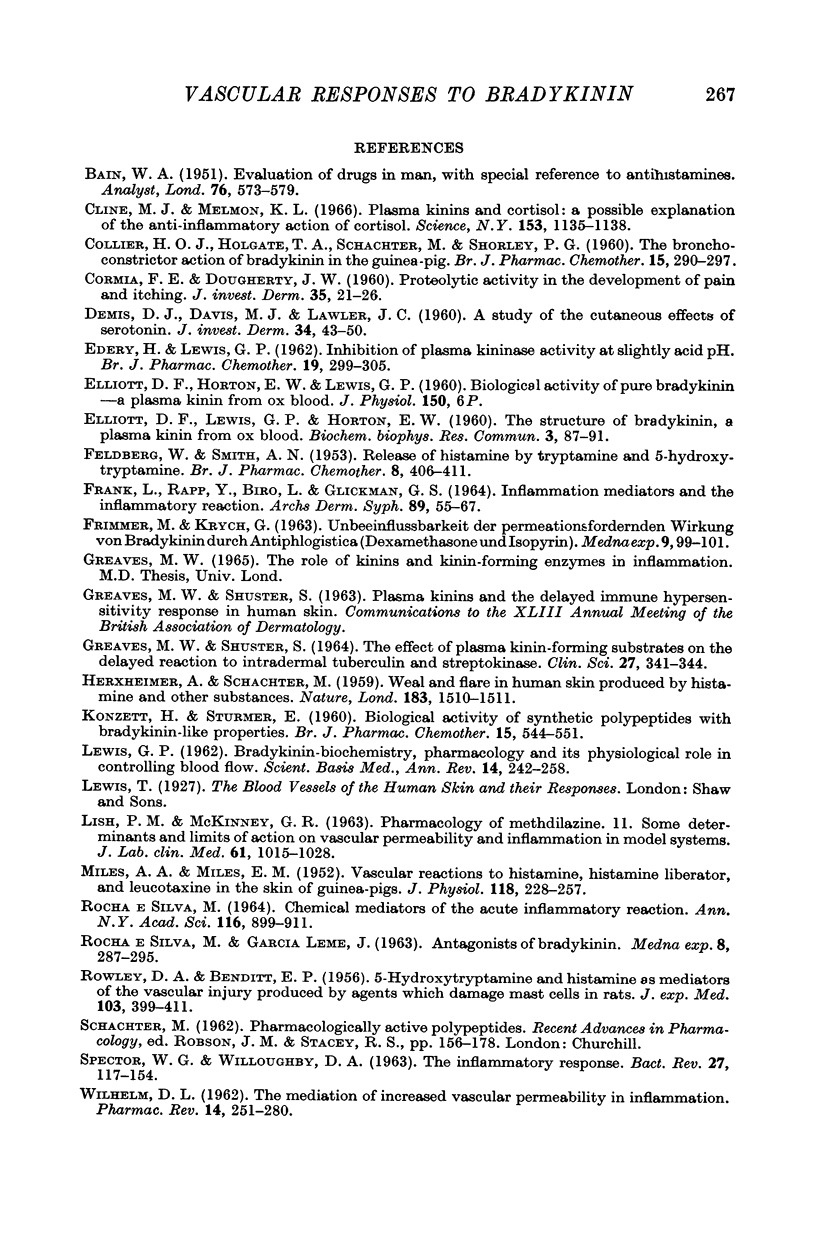
Selected References
These references are in PubMed. This may not be the complete list of references from this article.
- COLLIER H. O., HOLGATE J. A., SCHACHTER M., SHORLEY P. G. The bronchoconstrictor action of bradykinin in the guinea-pig. Br J Pharmacol Chemother. 1960 Jun;15:290–297. doi: 10.1111/j.1476-5381.1960.tb01247.x. [DOI] [PMC free article] [PubMed] [Google Scholar]
- CORMIA F. E., DOUGHERTY J. W. Proteolytic activity in development of pain and itching. Cutaneous reactions to bradykinin and kallikrein. J Invest Dermatol. 1960 Jul;35:21–26. doi: 10.1038/jid.1960.78. [DOI] [PubMed] [Google Scholar]
- Cline M. J., Melmon K. L. Plasma kinins and cortisol: a possible explanation of the anti-inflammatory action of cortisol. Science. 1966 Sep 2;153(3740):1135–1138. doi: 10.1126/science.153.3740.1135. [DOI] [PubMed] [Google Scholar]
- DEMIS D. J., DAVIS M. J., LAWLER J. C. A study of the cutaneous effects of serotonin. J Invest Dermatol. 1960 Jan;34:43–50. [PubMed] [Google Scholar]
- FELDBERG W., SMITH A. N. Release of histamine by tryptamine and 5-hydroxytryptamine. Br J Pharmacol Chemother. 1953 Dec;8(4):406–411. doi: 10.1111/j.1476-5381.1953.tb01338.x. [DOI] [PMC free article] [PubMed] [Google Scholar]
- FRANK L., RAPP Y., BIRO L., GLICKMAN F. S. INFLAMMATION MEDIATORS AND THE INFLAMMATORY REACTION. Arch Dermatol. 1964 Jan;89:55–67. doi: 10.1001/archderm.1964.01590250061011. [DOI] [PubMed] [Google Scholar]
- FRIMMER M., KRYCH G. UNBEEINFLUSSBARKEIT DER PERMEATIONSFOERDERNDEN WIRKUNG VON BRADYKININ DURCH ANTIPHLOGISTICA (DEXAMETHASON UND ISOPYRIN) Med Exp Int J Exp Med. 1963;9:99–101. [PubMed] [Google Scholar]
- GREAVES M. C., SHUSTER S. THE EFFECT OF PLASMA KININ-FORMING SUBSTRATES ON THE DELAYED REACTION TO INTRADERMAL TUBERCULIN AND STREPTOKINASE. Clin Sci. 1964 Oct;27:341–344. [PubMed] [Google Scholar]
- HERXHEIMER A., SCHACHTER M. Weal and flare in human skin produced by histamine and other substances. Nature. 1959 May 30;183(4674):1510–1511. doi: 10.1038/1831510a0. [DOI] [PubMed] [Google Scholar]
- KONZETT H., STURMER E. Biological activity of synthetic polypeptides with bradykinin-like properties. Br J Pharmacol Chemother. 1960 Dec;15:544–551. doi: 10.1111/j.1476-5381.1960.tb00278.x. [DOI] [PMC free article] [PubMed] [Google Scholar]
- MILES A. A., MILES E. M. Vascular reactions to histamine, histamine-liberator and leukotaxine in the skin of guinea-pigs. J Physiol. 1952 Oct;118(2):228–257. doi: 10.1113/jphysiol.1952.sp004789. [DOI] [PMC free article] [PubMed] [Google Scholar]
- ROCHAESILVA M., LEME J. G. ANTAGONISTIS OF BRADYKININ. Med Exp Int J Exp Med. 1963;8:287–295. [PubMed] [Google Scholar]
- ROWLEY D. A., BENDITT E. P. 5-Hydroxytryptamine and histamine as mediators of the vascular injury produced by agents which damage mast cells in rats. J Exp Med. 1956 Apr 1;103(4):399–412. doi: 10.1084/jem.103.4.399. [DOI] [PMC free article] [PubMed] [Google Scholar]
- SPECTOR W. G., WILLOUGHBY D. A. The inflammatory response. Bacteriol Rev. 1963 Jun;27:117–154. doi: 10.1128/br.27.2.117-154.1963. [DOI] [PMC free article] [PubMed] [Google Scholar]
- WILHELM D. L. The mediation of increased vascular permeability in inflammation. Pharmacol Rev. 1962 Jun;14:251–280. [PubMed] [Google Scholar]


